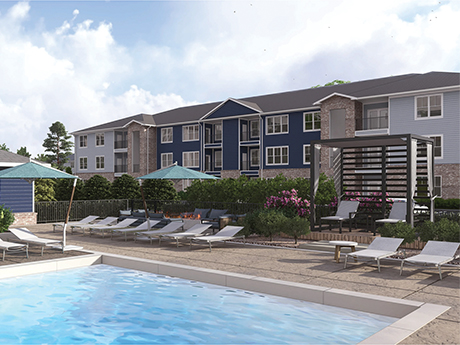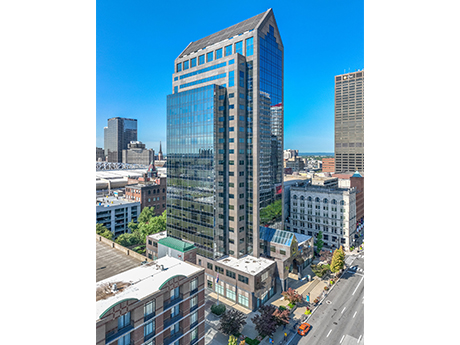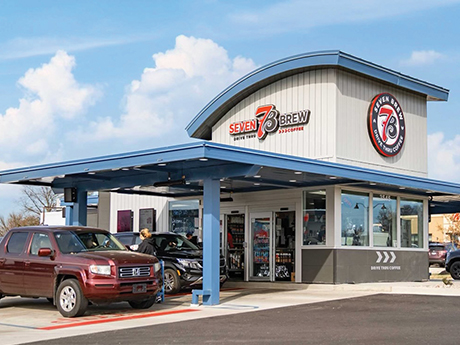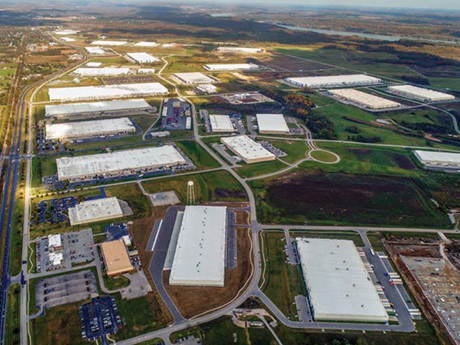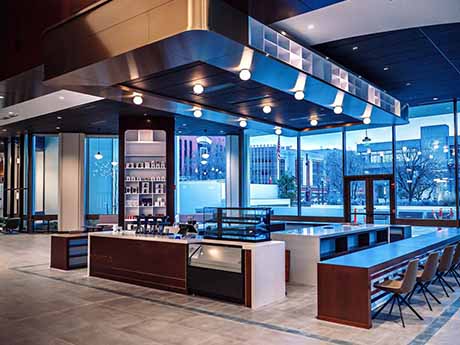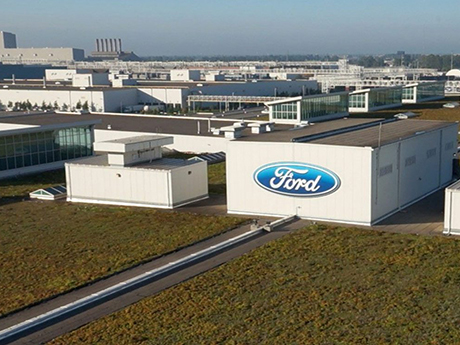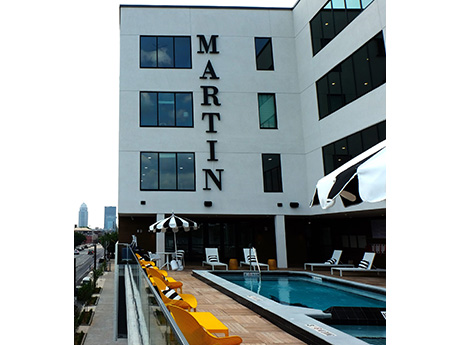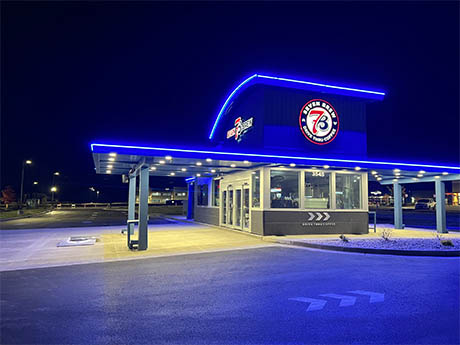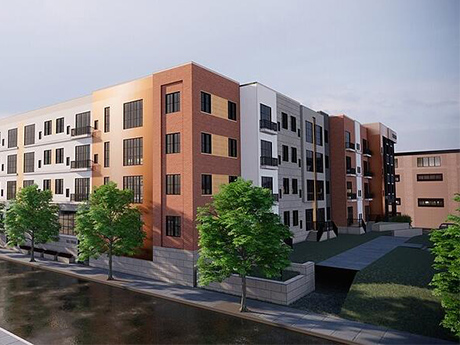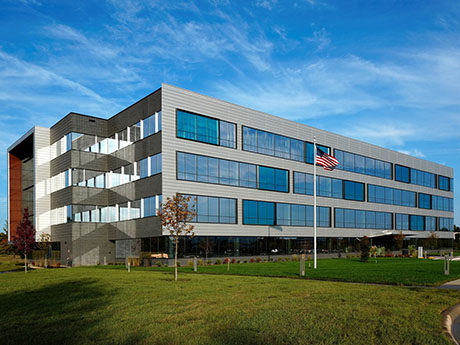Amidst economic uncertainty, Louisville stands out for its resilience, establishing itself as a stalwart in today’s market. According to Apartments.com, Louisville ranked No. 1 in the nation for rent growth in the second quarter of 2024. Factors such as Louisville’s non-cyclical job growth, expanding industries including EV production and the burgeoning River Ridge project in Southern Indiana all contribute to its growth. When we inspect the data, we see a basic yet fundamental market factor at play: supply and demand. Louisville’s supply is low relative to the growth in renters, resulting in upward pressure on rents despite a nationwide market that is largely declining. Supply dynamics The bulk of Louisville’s development pipeline is concentrated in Southern Indiana, with 1,039 units under construction in the Jeffersonville submarket. The Southern Indiana region has experienced solid growth with over 10,500 incoming jobs due to the economic activity from River Ridge. River Ridge Commerce Center reported an economic impact of $2.93 billion for calendar year 2023, up over $2.7 billion compared with 2022, according to Inside INdiana Business. Notable development projects in Southern Indiana include: • The Flats on 10th, 3300 Schosser Farm Way (300-units by Schuler Bauer Real Estate) • The Warren, 4501 …
Market Reports
The Louisville office market is at an interesting crossroads, to say the least. Historically, the sector has always skewed toward the suburban submarkets as east Jefferson County has been the go-to area for companies looking for office space. Over the past few years, the shift to the suburbs has become more pronounced than ever as Louisville’s office market experiences a dramatic contrast between the current state of the overall office market in the suburbs versus the central business district (CBD). In the suburban markets, the premier office buildings are experiencing low vacancy rates and record-setting growth in rental rates. On the opposite side, the CBD continues to struggle with increases in vacancy rates, which is expected to increase in the coming months. This trend reflects overall national office trends as companies focus on new, highly amenitized spaces to offer their employees. Suburban Louisville The suburban office market in Louisville has demonstrated reliable stability over the past four years. As of second-quarter 2024, the vacancy rate for Class A spaces stood at 12.7 percent, while Class B spaces recorded a higher rate of 17.2 percent. The suburban market has seen limited new construction deliveries thus far in 2024. The most notable …
Louisville’s economy remains resilient, and regional economic growth is creating a strong foundation for the retail market. Greater Louisville Inc. recently announced that 72 businesses are considering relocating or expanding to the region, with the potential of 8,200 new jobs and $3.8 billion in economic investment. Louisville is well-positioned for growth and the retail outlook remains strong with historically low vacancy rates. The market’s expanding consumer base and resilient economy have mostly overcome headwinds such as interest rate fluctuations, volatility in capital markets and signs of a slowing economy. This resilience has put Louisville in a strong position moving into the last quarter of 2024. At the end of the second quarter, Louisville’s vacancy rate stood at a strong 3.4 percent, outperforming the national benchmark of 4.1 percent, according to CoStar Group. The limited amount of new retail construction over the past 18 months has played a significant role in keeping the vacancy rate low. In fact, only roughly 322,000 square feet of retail space has been delivered over the past 12 months. Grocers are pushing leasing activity, making up 36 percent of the leasing volume that past 12 months. These retailers are executing most of the activity in spaces …
Louisville’s Industrial Market Is Entering ‘Slow-Paced Cooldown’ Period of Market Cycle
by John Nelson
The Louisville industrial market has simmered at a slow and steady pace during 2024. Continued uncertainty with debt markets, inflation and the upcoming elections have placed developers on the sidelines, and occupiers in a holding pattern. Despite how the market feels today, Louisville remains poised for a comeback. A brief overview shows how and why the Louisville market is in the position it is today, and what to expect beyond 2024. The past five years reveal a compelling story, one that developers, occupiers and investors alike have come to understand as they seek to develop, lease or own real estate in the Derby City. Driving much of this development and occupier activity in Louisville is the presence of the UPS Worldport, two Ford manufacturing plants, Haier’s GE Appliance Park and other manufacturers that keep suppliers, third-party logistics firms and e-commerce companies jockeying for space. Louisville’s central location on the I-65 corridor and proximity to two-thirds of the U.S. population are also key reasons the market continues to grow as a hub for logistics, e-commerce and manufacturing. The market saw tremendous growth over the past five years, assisted by the space grab during COVID. Since 2019 bulk inventory experienced growth of …
Like many regional peer cities, there is a clear bifurcation between office leasing activity in Louisville’s downtown and suburban office markets. Downtown Louisville has been slower to recover from the double gut-punch of the COVID-19 pandemic and local social unrest that kept workers away from the office in 2020, with overall vacancy stubbornly exceeding 20 percent for most of this year. Much of the vacancy has been driven by health insurer Humana, by far the largest office occupier in downtown Louisville, which has let several large Class B office leases expire as it continues to consolidate its workforce into properties the company owns. Year-to-date, downtown leasing activity totals 115,000 square feet, which is up 58 percent compared to this time last year, while overall absorption has swung sharply lower at negative 237,000 square feet. The relative oversupply of available office space has created a very “tenant-friendly” dynamic downtown, with landlords becoming increasingly aggressive to court leasing activity. More so than their suburban counterparts, downtown landlords are offering outsized incentive packages to tenants, including rental concessions, turnkey construction delivery of new tenant space, termination options and rental abatement periods that in some cases extend beyond one year. In exchange, downtown tenants …
Surging Electric Vehicle Construction Drives Momentum in Louisville’s Industrial Market
by John Nelson
With strong industrial leasing activity and significant development over recent years and currently, notably in the electric vehicle (EV) market, Louisville’s industrial real estate market maintains a steady drumbeat and forecasts continued success. The Louisville industrial market’s strong start to the year continued in the second quarter, and the JLL Q2 Industrial Insights report shows that Louisville remains a robust market. Over the past five years, developers constructed over 25 million square feet of Class A industrial space, positively absorbed 27 million square feet and has grown Louisville to a 90 million-square-foot Class A industrial market. Another positive market indicator is rental rates have appreciated 40 percent over the last three years, with the direct average asking rate currently at $5.67 per square foot. We expect this to continue to rise slowly over the next 18 months due to leasing activity, low inventory and a slowdown in speculative development. Louisville is quickly integrating and expanding capacity for EV production, following a growing EV industrial trend across the United States. We expect the EV market to continue expanding, especially with Ford Motor’s commitment to the region and generating an EV presence at the Blue Oval City SK facility. A joint venture …
Louisville, perhaps the center of the universe for horses and bourbon, is a somewhat undiscovered gem lying at the northern edge of the Southeast. The metro, with a population of just under 1.4 million people, is a steady performer across virtually all measurables, producing consistent and predictable metrics that may not dazzle Wall Street but certainly have not disappointed the base of capital invested in this riverfront market. The Kentucky Derby, which ran for the 149th time this past May, produces $400 million in economic development annually and is likely the first mental image conjured up when the term “Louisville” is mentioned. Kentucky bourbon likely comes to mind next as a $9 billion industry across the state, with roots as deep as oak. However, there’s much more to the Louisville metro. Through the first half of 2023, the Louisville metro area had recovered virtually all of the more than 55,000 jobs the market lost in 2020. Interestingly but not surprisingly, arts, entertainment and recreation posted a net 7.5 percent increase in jobs from 2020 through 2022, more than erasing a blistering 2020 loss of 25.4 percent of the jobs in this sector. Less glamorous but perhaps more critical is transportation …
As the nation’s 28th-largest city, Louisville is home to a dynamic, diversified economy. The Greater Louisville region draws workers from a 26-county area in Kentucky and southern Indiana, providing an ample and reliable source of educated and skilled employees. The geography of Louisville, specifically its accessibility to the Ohio River, central location nationally and mild climate, have contributed to its ability to grow and evolve. Additionally, reducing the income tax rate in Kentucky is a goal of the current Republican majority State Representatives to further economic development, and the Democratic governor (Gov. Andy Beshear) is also supporting this reduction as a way to help ease the burden of inflation for residents. Legislation passed in 2022 dropped the individual tax rate from 5 percent to 4.5 percent for tax year 2023, and a bill signed earlier this year by Gov. Beshear drops it again for 2024 to 4 percent. The goal is to ultimately get income tax rates down to zero, or very close to zero, in 50-basis-point steps as certain budget metrics are hit. These measures seem to be working for growth in the Commonwealth. One of the more notable capital investment projects is the Ford partnership BlueOval SK Battery …
Following the trends of both regional and national multifamily statistics, the Louisville metro area has had a robust stretch of development, repositioning and innovation in the multifamily housing sector that has surpassed 10 years in duration. With a population of 1.32 million, there are 516,000 households in Louisville with an average household income of $69,000. Pursuant to a recent CoStar Group report, Louisville has a total inventory of just over 84,000 units. It is anticipated that there will be over 91,000 units by 2026, a 8.3 percent increase. CoStar also forecasts that the Derby City’s vacancy rate will hover around 5.5 percent in 2026. One of the projects under development includes The Reserve (the Stable) at English Station. The 172-unit, Class A community adjoins a patio home development that was developed by Sunshine Industries. The property is slated for completion in January 2023. As far as popular neighborhoods for development, there are several recently developed or under construction projects in the city’s East End district. The city’s economy has benefited from the accelerated adoption of e-commerce as a result of the pandemic. Retailers and logistics providers are leasing a record amount of space as they seek to expand their distribution …
Remote Work Prompts Flight to Quality, High Urban Vacancies for Louisville Office Market
by John Nelson
The Louisville office market is taking diverse paths forward following the pandemic. The suburban Class A market is thriving with new construction, rental rate growth and resiliency in the face of downsizing tenants and negative absorption. A flight to quality among tenants has benefited local developers such as NTS Development, which has been constructing first-class, next-generation buildings at ShelbyHurst Office Campus since 2012. NTS recently completed its fifth speculative office building at the project, 425 North Whittington, a four-story, 130,000-square-foot building that is 60 percent leased with strong leasing activity. The flight to quality is driving tenants to choose higher-quality buildings with more expensive rental rates to help attract and retain talent and cater to a hybrid workforce. Traditional downtown occupiers are also considering the suburbs for the first time to create a workplace that draws employees back to the office. Suburban vacancy rates have increased since the end of 2019, with the Class A rate increasing by 490 basis points to 13.5 percent and the Class B vacancy rate increasing by 440 basis points to 15.2 percent as of second-quarter 2022. The average asking rental rate for Class A suburban space rose during this period despite increased vacancy rates. …
Newer Posts


